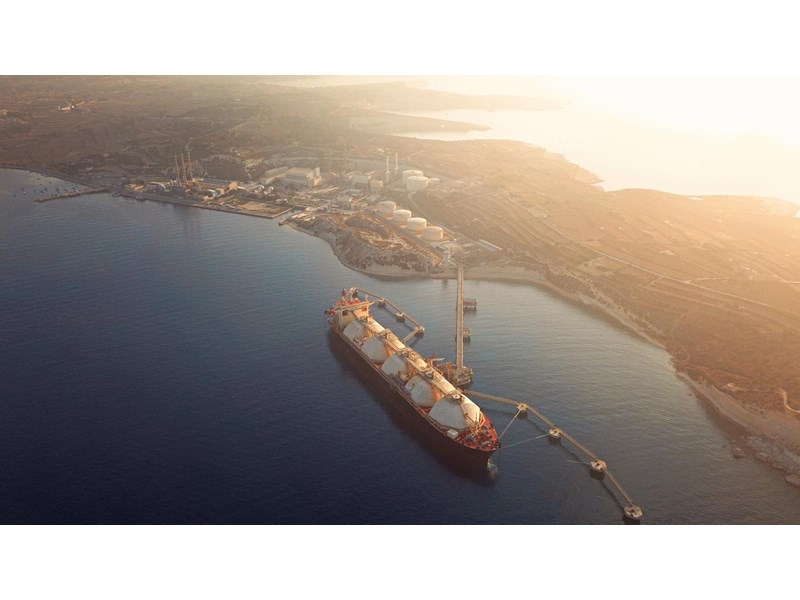Could an expansion of Western sanctions derail Yamal LNG?
The implications of the EU's ban on the transshipment of Russian LNG and what could come next
2 minute read
Massimo Di Odoardo
Vice President, Gas and LNG Research

Massimo Di Odoardo
Vice President, Gas and LNG Research
Massimo brings extensive knowledge of the entire gas industry value chain to his role leading gas and LNG consulting.
Latest articles by Massimo
-
Opinion
Dynamics shaping the European natural gas market
-
Opinion
The impact of the Israel-Iran conflict escalation on the global energy market
-
Opinion
Gas, LNG & The Future of Energy: investment momentum builds in a volatile market
-
The Edge
WoodMac’s Gas, LNG and the Future of Energy conference: five key themes
-
The Edge
Upside pressure mounts on US gas prices
-
Opinion
Video | Lens Gas & LNG: Will Russian gas and LNG come back?
The EU has recently banned transshipments of Russian LNG in its ports. This adds to US sanctions on Arctic LNG-2 and poses a number of questions for the global gas market including. what are the implications? Will sanctions on Russian LNG keep escalating? How would more sanctions impact the LNG market? In this video we explore the implications of US sanctions on Arctic LNG-2 and what new sanctions on Yamal LNG and model scenarios on what this could mean for global LNG markets.
Key figures of Yamal LNG trade
Yamal LNG, Russia’s large onstream Arctic project, produced 18 mmtpa in 2023. 70% of its LNG sales were shipped directly into markets, mainly to Europe but also to Asia via the Eastern Northern Sea Route (NSR) shipping lane during summer. The remaining 30% of its LNG sales, or 3-4 Mt, were transhipped, mainly in NW Europe, to accommodate contracted deliveries to Asia via the NSR. Small volumes were also transhipped for onward deliveries elsewhere in Europe.
Using our global gas modelling capabilities within our Lens platform, we assessed the hypothesis of tightening sanctions on Russian LNG and quantified what the implications on future market balances and prices would be.
Watch now:
Scenario one - the EU bans Russian LNG imports on its territory
If the EU fully bans Russian LNG imports, European buyers with contracted LNG delivered on a FOB (Free on Board) or DES (Delivered Ex Ship) basis to Europe will have to call Force Majeure. In this scenario, we estimate Yamal LNG could lose up to 10 mmtpa, but would maintain exports through the NSR if there are no additional sanctions. Additional exports would require Yamal LNG to buy or charter additional ships, some for deployment as stationary ships for ship-to-ship operations near Murmansk and others for onwards sales. Additional ships will take time to secure and the motivation to take them could be discouraged by the potential for further sanctions (see below).
Scenario two- the US sanctions Yamal LNG and NOVATEK’ ships
A move by Europe to ban Russian LNG could encourage further US measures. If the US were to sanction Yamal LNG and NOVATEK’ ships, any company which wants to continue doing business with US entities would have to stop buying LNG from ships operated by Yamal LNG or NOVATEK. Buyers of existing contracts would have to call Force Majeure, including CNPC. We don’t think the development of a “shadow fleet”, or of a Specific Purpose Vehicle, alongside price discounts, would be enough to lure would-be buyers to risk incurring secondary sanctions from the US. Ultimately, we think a US ban on Yamal LNG and NOVATEK’ ships would result in a complete halt of production.
More sanctions on Russian LNG seem likely. The anticipated growth in global LNG supply from 2026 is likely to embolden the EU to impose an outright ban on Russian LNG imports. US sanctions on Yamal LNG and NOVATEK’s ships are likely to follow suit. Much will obviously depend on how the conflict and geopolitical situation will evolve. The eventual scale and timing of more sanctions remain uncertain, but the implications would most likely result in supply disruption of Yamal LNG, paving the way for a stronger for longer LNG price outlook.
Fill in the form at the top of the page to receive the latest Gas & LNG insights, straight to your inbox.

Lens Gas & LNG
Our powerful data analytics solution for exploring industry data alongside leading expertise, analyses, and modelling insights to enable faster, more accurate operational and strategic planning and portfolio management decisions.
Learn More





